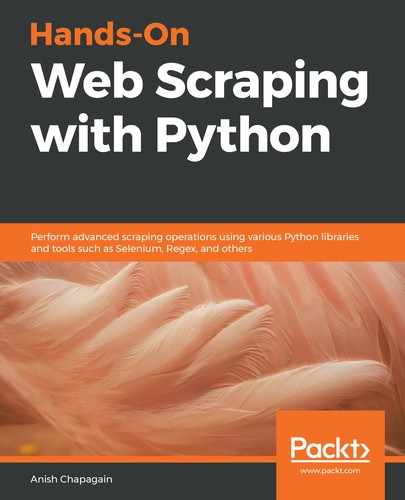robots.txt, also known as the robots exclusion protocol, is a web-based standard used by websites to exchange information with automated scripts. In general, robots.txt carries instructions regarding URLs, pages, and directories on their site to web robots (also known as web wanderers, crawlers, or spiders) using directives such as Allow, Disallow, Sitemap, and Crawl-delay to direct their behavior:

For any provided website addresses or URLs, the robots.txt file can be accessed by adding robots.txt to the URL, for example, https://www.samsclub.com/robots.txt or https://www.test-domainname.com/robots.txt.
As seen in the preceding screenshot (The robots.txt file from https://www.samsclub.com/), there are Allow, Disallow, and Sitemap directives listed inside https://www.samsclub.com/robots.txt:
- Allow permits web robots to access the link it carries
- Disallow conveys restriction of access to a given resource
- User-agent: * shows that the listed directives are to be followed by all agents
For access violation caused by web crawlers and spammers, the following steps can be taken by website admins:
- Enhance security mechanisms to restrict any unauthorized access to the website
- Impose a block on the traced IP address
- Take necessary legal action
Web crawlers should obey the directives mentioned in the file, but for normal data extraction purposes, there's no restriction imposed until and unless the crawling scripts hamper website traffic, or if they access personal data from the web. Again, it's not obligatory that a robots.txt file should be available on each website.
